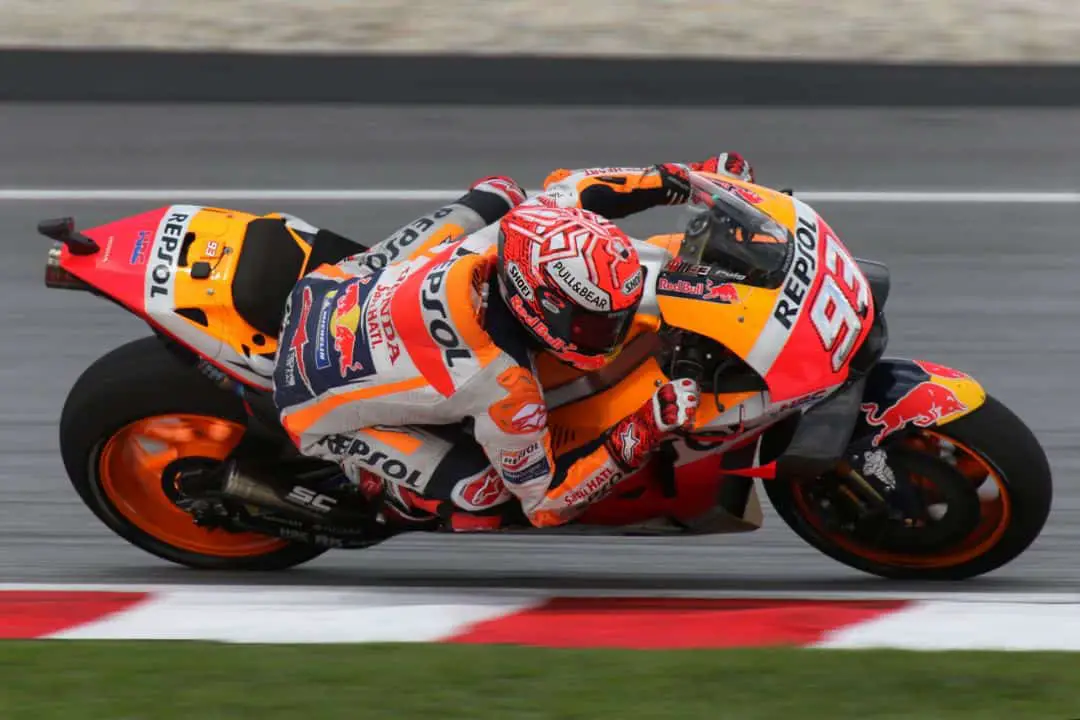In a race, each MotoGP rider must have two complete and undamaged sets of protective gear which must meet the requirements of MotoGP World Championship Regulations. In a complete set, a rider wears a helmet, leather suit, gloves, boots, back protector and chest protector.
Overview
In this article, we examine the protective gear that MotoGP riders wear during a race and also how they differ from the gear normal riders might use, since they have extremely high standards regarding safety.
We will discuss the following:
- MotoGP protective gear
- Helmets
- Race suits
- Gloves
- Boots
- Back protectors
- Chest protectors
- What MotoGP gear costs
MotoGP protective gear
In MotoGP, the ‘rider’s protective gear’ is referred to as “rider’s safety equipment”, and is addressed in the following sections of the FIM GP Championship Regulations:
| Section | Page | |
|---|---|---|
| MotoGP | 2.4.5.2 | 140 |
| Moto2 | 2.5.5.2 | 184 |
| Moto3 | 2.6.5.2 | 235 |
You can find the most up to date version of the PDF document on http://www.fim-live.com/en/sport/regulations-and-documents/grand-prix/
For most of us, we just want to know the basic stuff and couldn’t be bothered with reading long, boring documents. Just tell us what we want to know… right?
Helmets
The helmets that MotoGP riders use must all have the ‘FIM Homologation Label’ which can be scaned with a QR code reader. The QR code on each helmet takes you to the web page that provides information on the particular helmet.
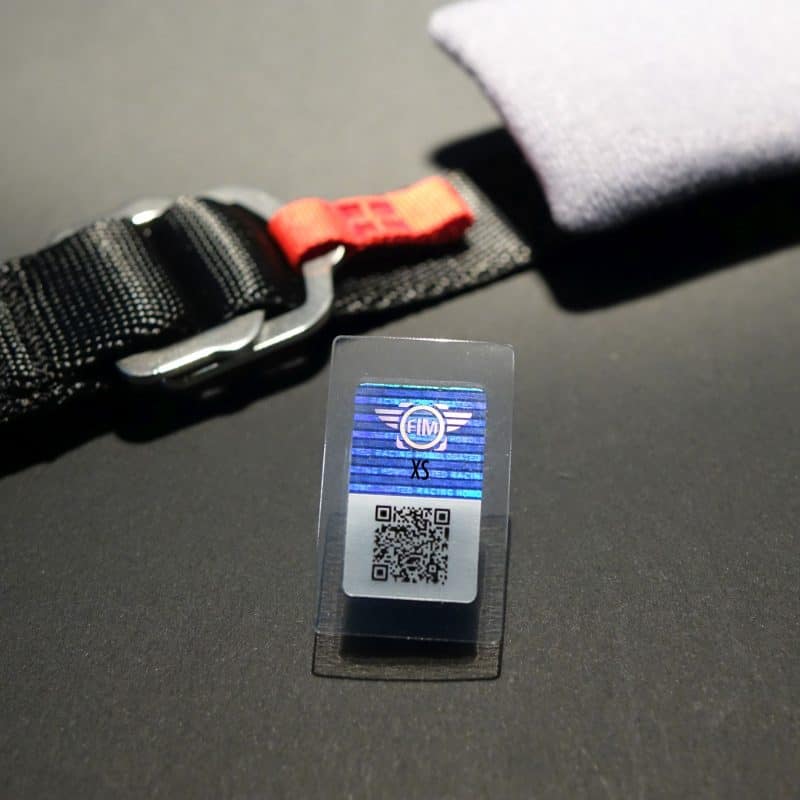
This label basically lets the person inspecting know that the helmet has passed homologation tests and meets the minimum requirements of FIM. But there aren’t many helmets that make this list. At the time of writing, only 23 helmet models have passed:
The reason why the FIM has their own standard of testing is because not all certifications, like DOT or SNELL, take into account HIC (Head Injury Criterion) and BrIC (kinematic rotational Brain Injury Criterion). So this additional certification makes sure that all the helmets used are complying to the same standards.
Quite recently, manufacturers started selling FIM certified helmets to the general public like the AGV Pista GP RR which you can buy from merchants like RevZilla.
But it would be worth noting that the Shoei X-Forteen is also used in MotoGP even if they aren’t sold with the FIM certification to the general public.
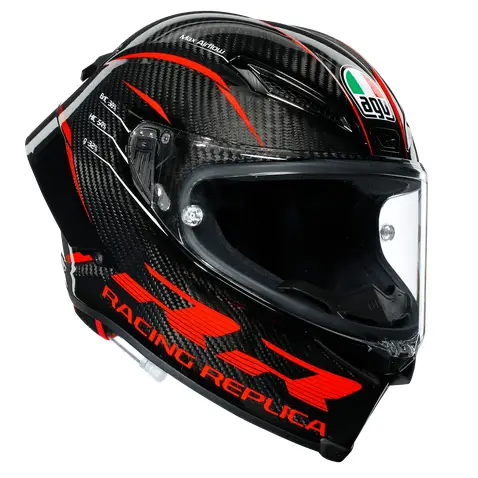
Race suits
In MotoGP, the riders’ race suits are made of leather or a material with equal strength to leather. Their suits are also required to have an airbag system which helps disperse the force of impacts during a crash. Airbag systems only became mandatory for MotoGP in 2018 but have been in use since 2007.
MotoGP only allows cordless airbag systems that are not attached to the motorcycle in any way. Instead, these advanced airbag systems use a computer with various sensors in the suit to determine when a crash will occur. They also have more than one cartridge to deploy the airbag, so crashing once won’t necessarily eliminate you from the race.
The Dainese Misano 2 D-Air is a typical example of a leather race suit with an airbag system. Like actual MotoGP race suits, the Misano 2 D-Air also has an hydration system in the hump which holds around 300ml of liquid.
Still, the Misano 2 D-Air is considered an affordable, entry-level airbag race suite.
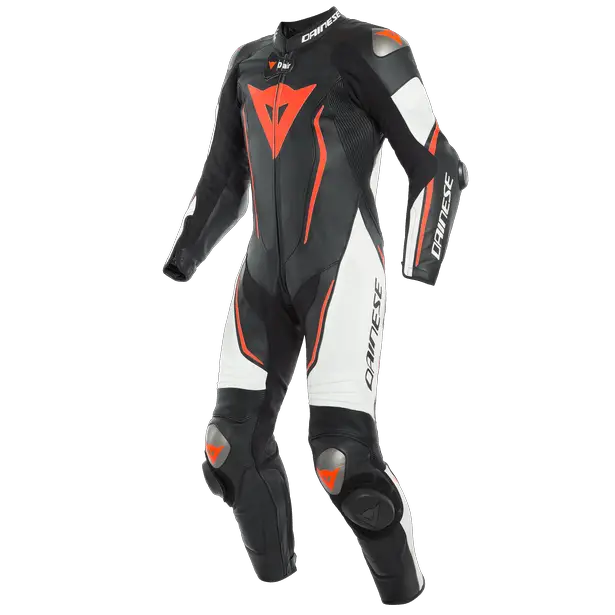
One of the regulations for MotoGP race suits, which was rather unexpected, was that the knee, elbow and toe sliders are not allowed to make sparks, debris or smoke when scraping the track. This rule obviously prevents riders from using unethical tactics to disbenefit their competitors (like in a typical James Bond movie).
Gloves
In MotoGP, the riders have to wear gloves made from leather or a material that is just as strong as leather. These gloves have tough knuckle protection and overlap the race suite by at least 50mm or almost 2 inches.
One thing they are very strict about is that the gloves should be able to fasten firmly around the riders’ wrists. This prevents their gloves from coming off when sliding over asphalt, especially when they slide feet-first on their stomachs.
A typical example of gloves used in MotoGP is the Alpinestars Supertech. What you might notice on these gloves (and many other brands) is the ‘bridge’ that connects the pinkie and ring finger.
MotoGP does not require gloves to have ‘bridges’ but it is certainly a valuable safety feature since pinkie finger injuries are quite common.
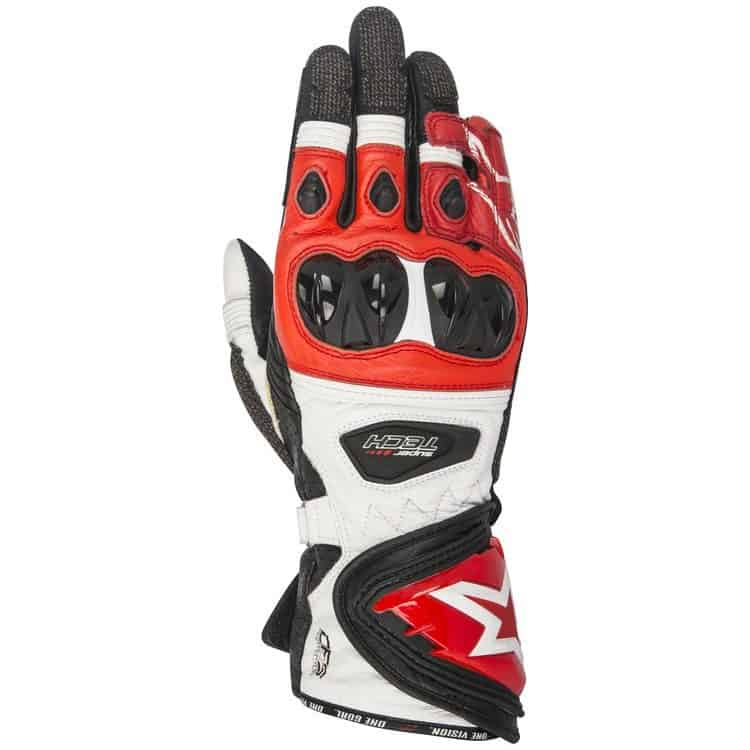
Boots
Strangely, MotoGP doesn’t have a minimum height for racing boots. Instead, they only require that the boots have a height sufficient to overlap the race suit by at least 70 mm (2 ¾ inches).
As we all know, short boots don’t offer any lateral support or impact protection on the shins. But we never see a MotoGP rider with short boots and that’s probably just because they don’t want to get hurt. There would be no point in misusing this loophole.
Even with the absense of a minimum height on boots, MotoGP still require that boots are made from leather or a material that has equal strength. The boots are also required to have a method of fastening so slip-on boots are not acceptable.
A typical MotoGP race boot is the Alpinestars Supertech R which has been used by many MotoGP riders.
Also notice that unlike many other race boots, this one has plastic sliders instead of metal. Remember when we discussed the race suits, I mentioned that none of the sliders are allowed to make sparks, smoke or debris.
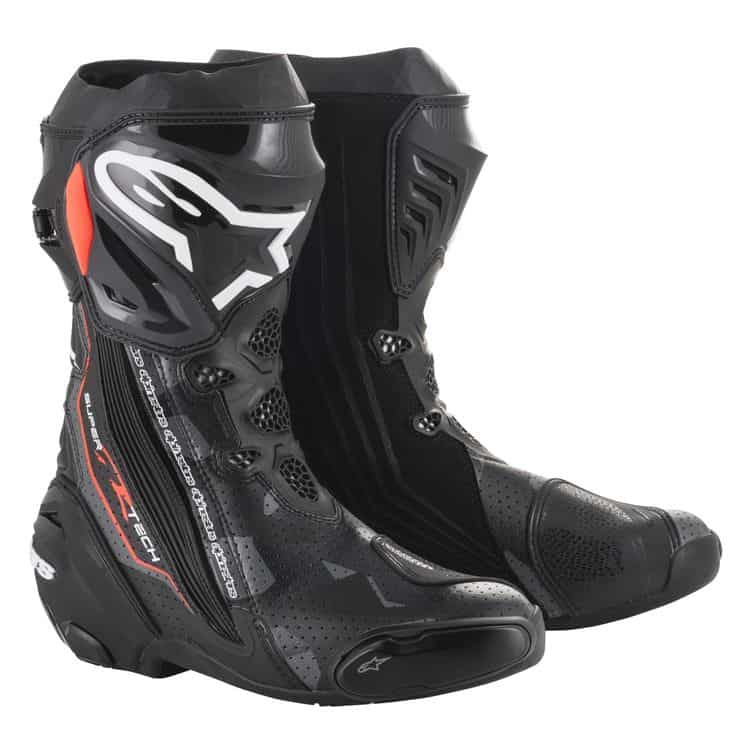
There really isn’t much that regulates boots used in MotoGP aside from abrasion resistance. I think boot manufacturers have been doing a good job at keeping riders safe just by trying to stay ahead of competing manufacturers.
Back protectors
In MotoGP, the minimum requirement for back protectors is EN1621-2:2014 or prEN1621-2:2010. These codes only tell us which standards we are looking at but not what they contain.
Let’s analize the code: EN 1621-2:2014
- EN (or sometimes CE) – “European Norm” or “Conformité Européene” (in French)
- 1621 – Refers to “Motorcyclists’ protective clothing against mechanical impact”
- 2 – Refers to “Part 2: Motorcyclists’ back protectors”
- 2014 – Refers to the year of the standardised document which supersedes previous versions (EN1621-2:2003 in this case)
Note: You would expect MotoGP to specify a minimum level for back protectors, but they don’t insist on a particular level. This means that both CE1 and CE2 is acceptable. CE1 is a good enough rating for most track races, but some race events hosts might demand a CE2 rating.
As before mentioned, this code doesn’t tell us what the exact requirements or testing methods are. To access this kind of information, you’ll need to purchase the document from the representing national organisation of your country, like BSI in the United Kingdom, for example.
This document would cost you around £182. But I figured that this information isn’t necessary for us (the general public). Manufacturers, however, would need this information. We just need to know which standards MotoGP uses and where to find back protectors with those standards.
And that makes it pretty simple because most of the large merchants, like RevZilla, list the rating or certifications on their product pages. They sometimes just list it as CE1 or CE2 as you already know which standard it is referring to.
Chest protectors
MotoGP allows both full chest protectors and divided chest protectors. A full chest protector would be a single protector over the chest, whereas the divided chest protector would be two individual protectors divided vertically on either side of the race suit zipper.
The chest protectors must have a prEN1621-3 certification with either CE1 or CE2 rating. This doesn’t give you much information about the chest protector. But MotoGP does, however, have an additional requirement; the chest protector must have a minimum area of 230 cm² (36.65 in²).
What MotoGP gear costs
When buying off the shelves, it could cost around $5,000 for a standard set of protective gear that would be permitted in MotoGP. But since MotoGP protective gear is mostly custom made, the costs can increase dramatically; over ten times as much.
The cost for a standard set is based on known products used in MotoGP, but there is still a significant amount of variability between brands. Below is a table of protective gear I selected to conclude the cost of a complete, off-the-shelf MotoGP set:
| Item | Cost |
|---|---|
| AGV Pista GP RR | $1,500 |
| Dainese Misano 2 D-Air | $2,500 |
| Alpinestars Supertech Gloves | $400 |
| Alpinestars Supertech R Boots | $500 |
| Back protector | (CE1 included with suit) |
| Dainese Pro Armor Chest | $50 |
| Total | $4,950 |
Final words
You might have expected to learn that MotoGP riders wear super high tech protective gear unobtainable by us street riders. Far from true! Even though the latest products might appear for the first time on a MotoGP track, the manufacturers almost always develop a new product with public consumers in mind.
For example, it’s not unusual today to see non-competitive track riders and even everyday street riders using an airbag system. This evolution in protective gear would certainly not have been the same without MotoGP.
I always try to keep my articles interesting and informative. And I’m always thankful when they are shared on social media platforms or Pinterest.

